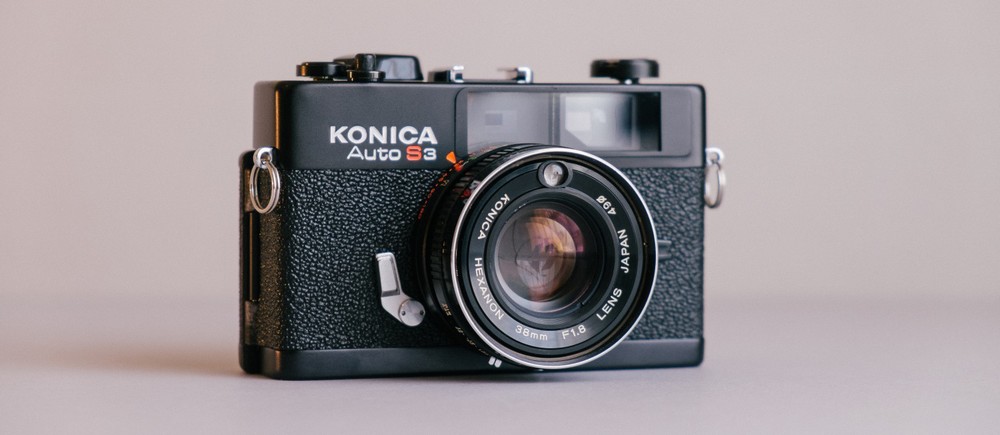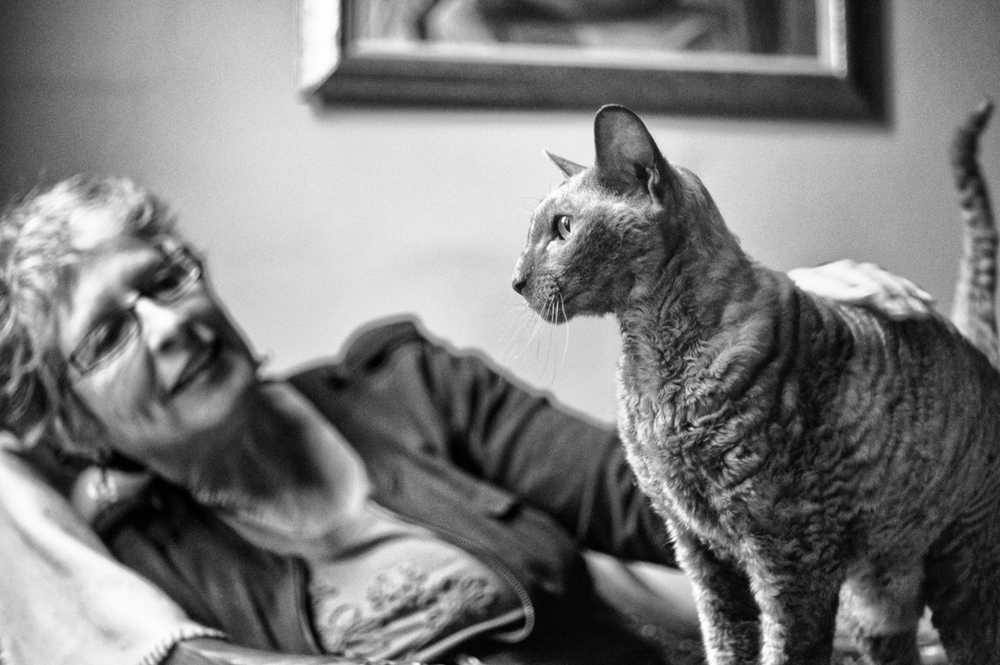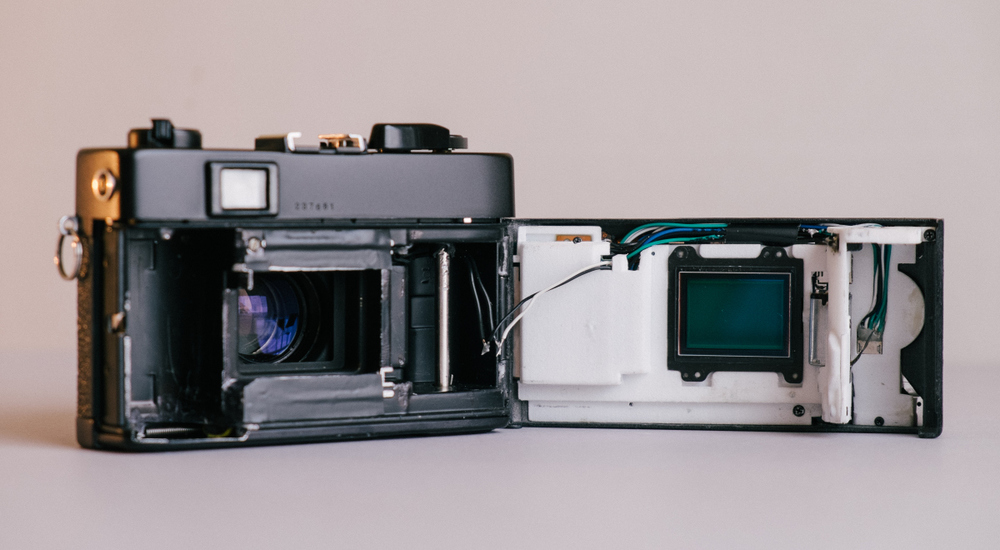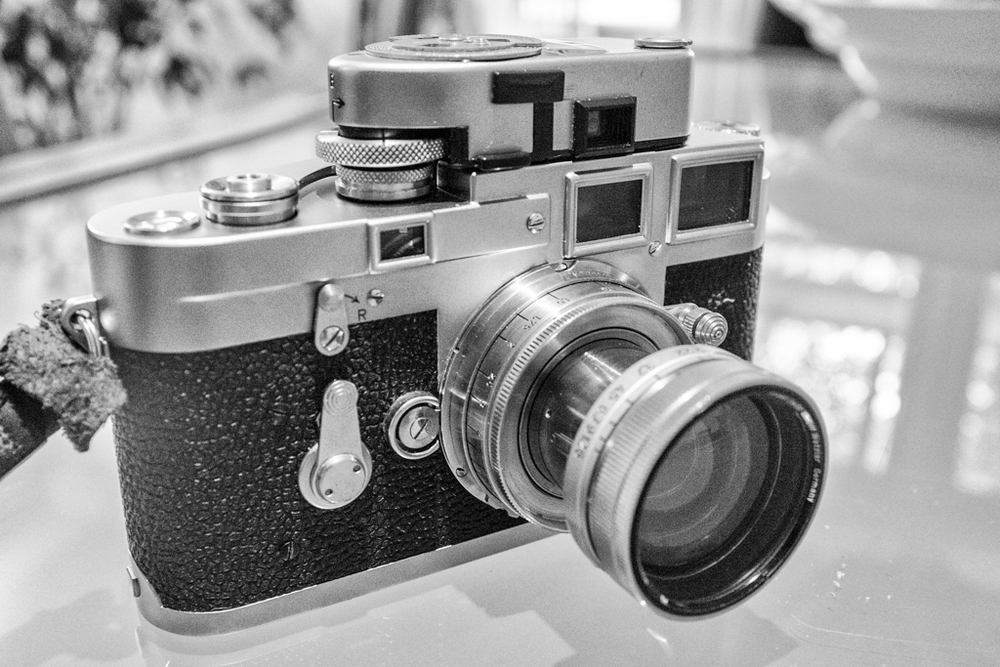Leica’s screen-less M60 has been surprisingly well received, even though it is restricted as a special edition. Many photographers, I know, would like to see a production model. Well, perhaps they could get one for a lot less than Leica will charge. They could support Oliver Baker and his Frankencamera: An M3 converted with a digital back.

Ollie caused quite a stir with his Kickstarter project when it was publicised last week. It’s been a a dream of many Leica fans to have a way of converting an old film camera to digital and it looks as though Ollie has a viable plan. He has already done it with a Konica which is up and running. Now, with the help of the Kickstarter cash, he is well on the way to realising his M3 Frankencamera.
Since Ollie is just down the road in Brighton, I decided to interview him to clear up some of the questions I had about the conversion.
What is your involvement with the photography? Are you a keen photographer or is this a project you are approaching mainly from a can-it-be-done perspective?
I have loved photography since I found my grandfather’s bag of old film cameras and lenses, and it’s always been very frustrating not to be able to make proper use of them as film is too time consuming and expensive for me. My first digital camera was a Sony NEX-5 which I bought solely to use the manual focus lenses and that love of manual focus and solid old fashioned engineering is what drew me to the elegant rangefinder focusing solution. Unfortunately their price kept them out of my reach so I suppose this project is partly about the engineering and problem solving, but also about being able to use all this wonderful old technology in a new light.
How old are you and what do you do for regular work?
I am 18 years old and I have just finished college and am about to set off to Oxford to read Physics.

You have majored on the M3 but presumably your conversion could be applied to any M film camera. Is this so or is there something specific to the M3 that makes it more suitable?
The M3 was my first choice being the most classic rangefinder but also because of its great viewfinder and aesthetics, however in theory it could be applied to any M camera. the design may need some modification though, I’ll have to wait until I can get my hands on a wider selection.
How do you plan to cope with light metering since the M3 has no such facility
It will of course remain a fully manual camera, I feel that if millions of people have been able to cope without inbuilt metering over the years, I should be able to learn too, but if it becomes too much I understand there are light metering accessories which can help.

Will your conversion feature a Sony screen or will it simply be a digital back with, say, ISO dial as on the new M60?
At the moment I plan on creating two designs, one with a screen, and another with just an ISO dial, however I and everyone who has contacted me favour the dial idea, so maybe the screen will have to go permanently.
Is it intended that this be produced as a do-it-yourself kit or will you set up a service to modify customers’ cameras?
The design should be really easy to fit on the M3 so people should have no difficulty doing it themselves with some minor adjustment. The question is shall I ship it with or without the digital components. There may need to be some minor soldering but if I can do it anyone can, so it may end up as a do-it-yourself kit. This is actually another reason to omit the screen as far less soldering is then needed.

Where do the sensor and electronics come from? You mention Sony A7 as being ideal but it might be necessary to make do with the NEX’s APS-C sensor. How is it possible to get the parts without cannibalising production cameras?
I hope to use the full-frame Sony A7, I just don’t yet know whether it requires its own electronic shutter; if it does I may need to find someone with far more ‘hacking’ ability to fix it. The electronics all have to come from cannibalising cameras as far as I am aware but maybe I can use some of the money to sourcing some more fitting components. The dismantling of cameras is actually very easy, the only difficult bit is reassembling them so hopefully it can be done by anyone.
How do you cope with the need to ensure the sensor is at a fixed location in relation to the optics? If using an A7 sensor, will the crop factor remain 1:1 and if using the NEX sensor will it be 1.5?
I think that the quickest, most robust and most compact way to perform the conversion is by replacing the easily removable ‘shell’ (the bit covered in leather). Therefore the lens mount is part of the design and can be set at the correct distance. However I am considering other designs, but I can assure that it is very much possible. The crop factor is the only issue with the APS-C sensor, however it does allow you to use 35mm lenses with the M3 viewfinder so that’s a silver lining.
How do you plan to accommodate the SD card slot?
You should be able to access the SD card from the removable bottom plate, which will be the original Leica one, if all goes to plan.
Which controls on the M3 will you utilise to control the electronics? Presumably speed and ISO are the main functions (as on the Leica M60 edition) but will you use anything else, such as the film rewind, the advance lever? I’m not sure what they could do but I am interested in your views.
I am not changing anything on the M3, the Leica camera will work just as it does with film, the shutter speed will be adjusted by the original dial and focus will be adjusted via the original viewfinder. The only thing controlled via the digital camera will be the ISO, for which I will use an old fashioned dial which will have to be made as part of my design. The film advance lever is still required to cock the shutter and is something that people seem to really miss about mechanical cameras. The only part of the camera which meeds to communicate with the digital camera will be shutter release, or the flash sync to tell the digital camera when to record the image.
You say that the conversion will be reversible. How is this possible?

Again it is still a work in progress but it seems the easiest way is to remove the body shell via 4 screws and replace it with a printed one. There will be no need to modify the Leica parts in any way (hopefully).
Your £3,000 budget seems very modest and do you feel that it is enough to produce a working camera that will impress the Leica fans?
I truly hope so! The only costs are the equipment, prototypes and possibly paying a ‘hacker’. The quality of the design depends on how much time I spend on it, which is free from my point of view. It also seems like I might raise considerably more than my target, which can only help.
Ollie seems to have everything covered and the project looks feasible. My only concerns will be the difficulty of installing the kit and in obtaining the necessary bits from the chosen camera such as the Sony A7. However, once Ollie’s design has been implemented I am sure there will be plenty of help for those who are not too keen on wielding a soldering iron themselves. Whatever happens, the converted M3 is likely to be a lot cheaper than the £12,000 M60 edition or, even, a production version of the M60 if Leica decides to play.
Good news is that Ollie’s Kickstarter project has already been oversubscribed to the tune of £4,000 with a month still to go. You can get in on the act here.

Hi there Mike. I read about this on another site (shock, horror!) the other day and I’m totally intrigued! I’ve decided to take the plunge and back this project via Kickstarter, as I don’t think I’ll ever be able to afford an M60. Really looking forward to seeing how this project unfolds!